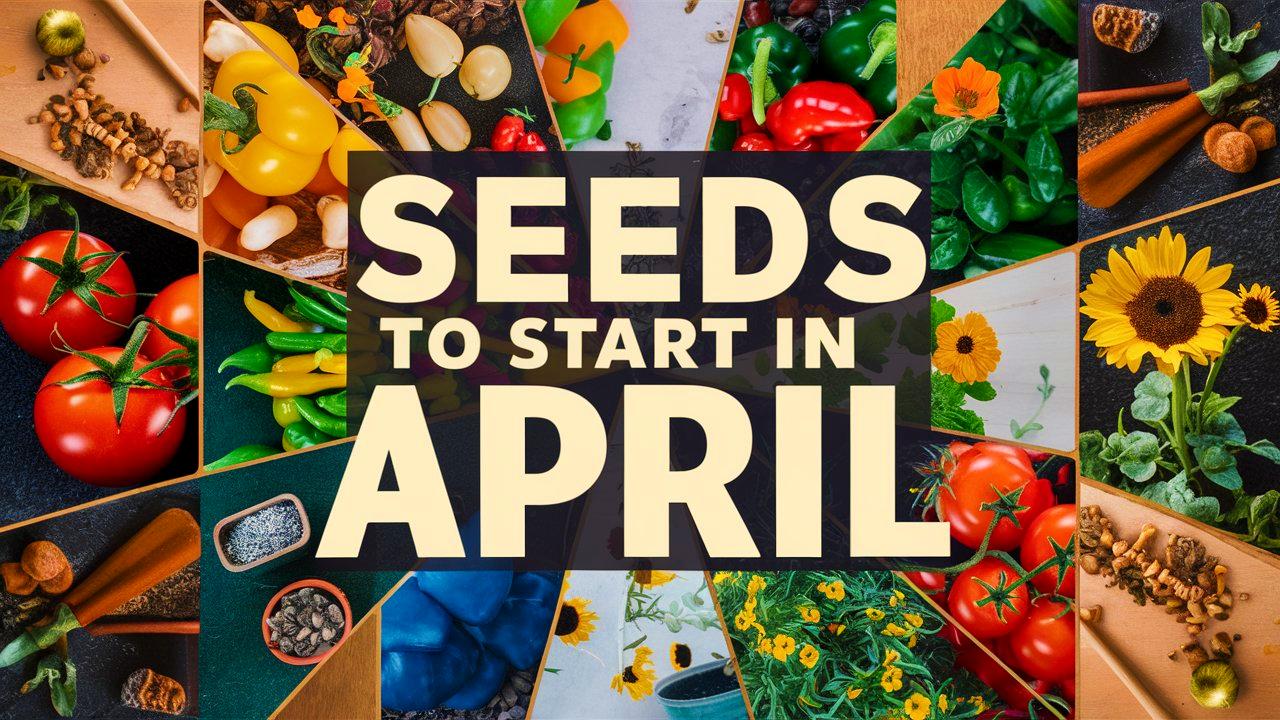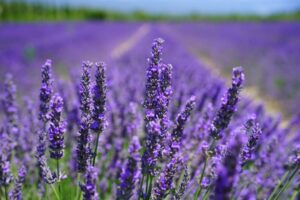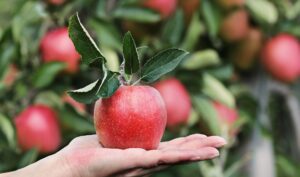As spring unfolds, April becomes a bustling month for gardeners eager to sow seeds and watch their landscapes blossom. With the frost receding and temperatures rising, the opportunities for planting expand beautifully. This guide will deepen our exploration into vegetables, flowers, and herbs ideal for planting in April, enriching your garden with a plethora of colors, flavors, and scents.
Vegetables To Plant
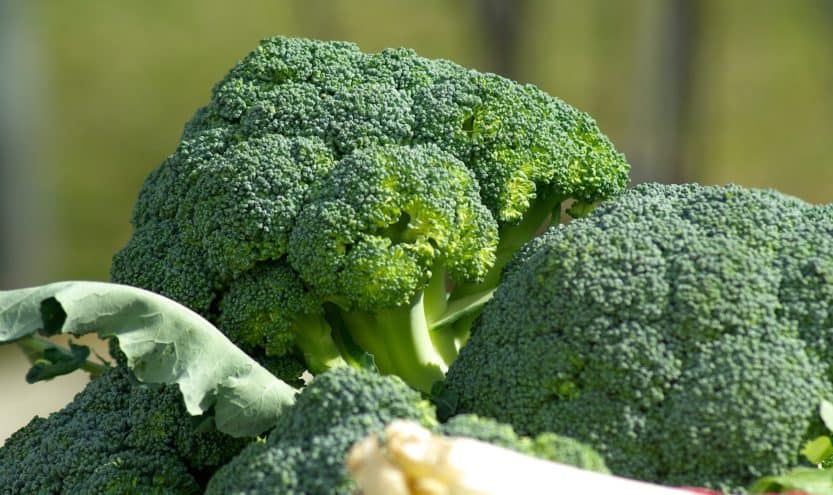
April paves the way for a vibrant vegetable garden filled with flavors, textures, and plenty of health benefits. Let’s take a closer look at ten vegetable varieties that you can start planting in April, each holding promise for a fruitful harvest.
Carrots
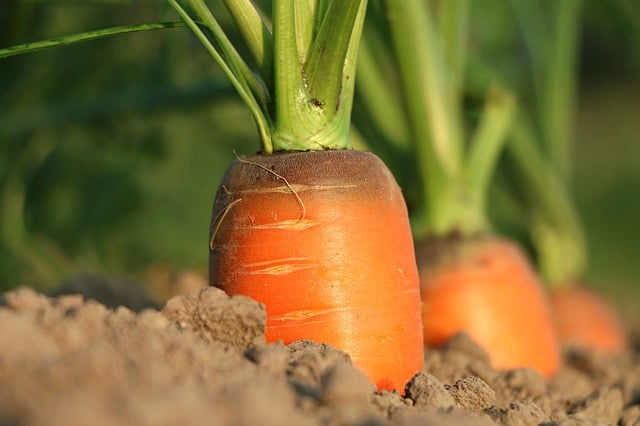
Carrots are an exceptional cool-season crop, renowned for their crisp texture and sweet flavor. They are rich in beta-carotene, vitamin K1, and antioxidants, making them a nutritious addition to your meals. April is the perfect time to sow carrot seeds since they thrive in cooler conditions and can tolerate light frost.
Planting Details: In USDA zones 3-6, you can plant carrots from late March through late April. For optimal growing conditions, ensure that the soil is well-drained and free of stones, as this contributes to the growth of straight, undamaged roots. Carrots prefer a pH between 6.0 and 6.8, so conducting a quick soil test isn’t a bad idea.
Tips for Success: Direct sow carrot seeds about 1/4 inch deep, allowing for 2-4 inches between seeds. Once they grow, thin seedlings to avoid overcrowding; this is crucial for root development. Regular watering helps to keep the soil moist without becoming soggy. Harvest carrots once they’re about 1 inch in diameter for the best flavor.
Peas
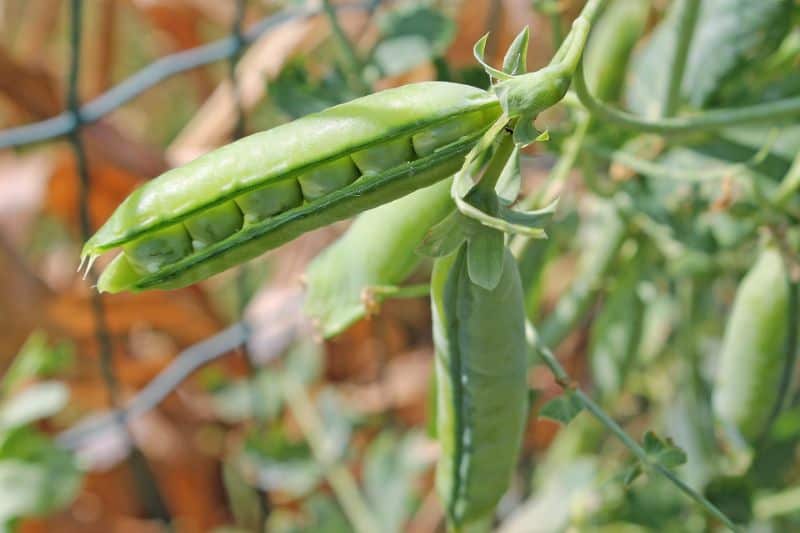
Peas are a delightful addition to any garden, offering sweetness and nutrition. They are a symbol of spring and are known for their high levels of vitamins A, C, and K, as well as being a good source of fiber. April is an ideal planting month as these seeds thrive in cool weather.
Planting Details: In USDA zones 3-5, peas should be sown by mid-March or early April, while in zones 6-8, direct seeding in early April is appropriate. Ideal temperatures for pea growth range from 40°F to 75°F. Peas prefer well-draining, loamy soil with good compost content.
Tips for Success: It’s important to plant peas deeply, about 1 to 2 inches apart, and provide them with a support trellis as they grow. Regularly check the soil moisture, as peas prefer consistent watering. Peas can flower and set pods as long as the temperature is right, making them a rewarding yield for your garden!
Lettuce
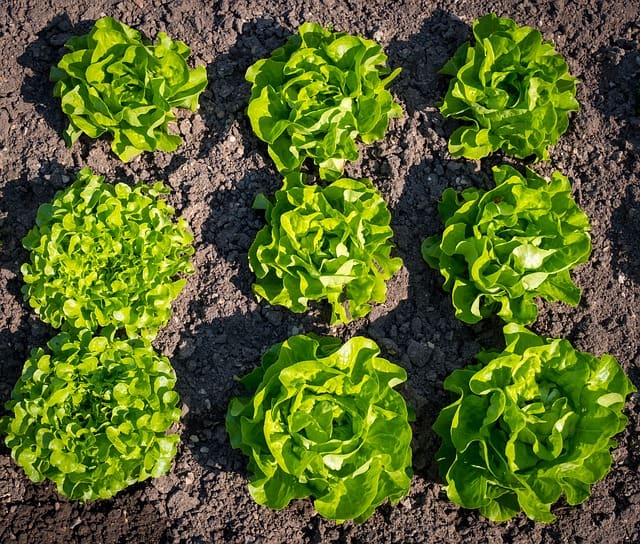
Lettuce is an incredibly versatile, nutrient-rich leafy green that offers a burst of freshness in salads. With its crisp texture and mild flavor, lettuce is an essential garden staple, providing vital vitamins A and K, along with fiber.
Planting Details: In USDA zones 3-9, you can start direct sowing lettuce seeds in either late March or early April. Lettuce enjoys cool weather and thrives best between 45°F and 65°F, and it can withstand light frosts beautifully.
Tips for Success: Sow seeds about 1/4 inch deep and thin them once established to provide enough room for leafy growth, ideally spacing them 6-12 inches apart, depending on the type. Regular, even watering during the early morning hours ensures crisp, succulent leaves. For a continuous harvest, stagger your planting every two weeks.
Radishes
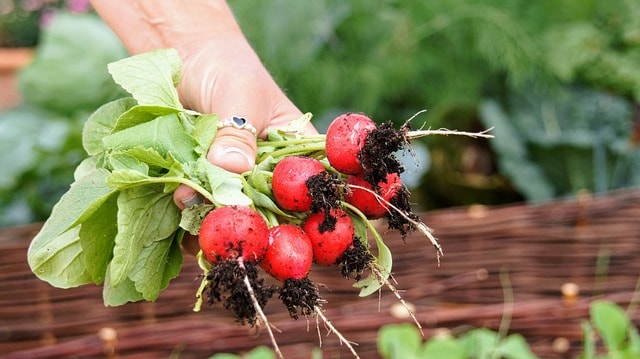
Radishes are one of the fastest-growing vegetables, often ready for harvest within weeks of planting. With a peppery crunch and vibrant colors, they’re not only eye-catching but also packed with vitamin C, potassium, and folate.
Planting Details: Radishes can be planted in USDA zones 3-8 from early March to late April, taking advantage of cooler temperatures. They thrive best in temperatures between 50°F and 70°F, although they can grow in slightly warmer weather.
Tips for Success: Plant radish seeds about 1/2 inch deep and 1 inch apart in rows to allow for ample harvest later. Water regularly, especially during dry spells, to prevent the roots from becoming tough. You can harvest radishes when they reach about 1 inch in diameter, but for a more delicate flavor, collect them even sooner.
Spinach
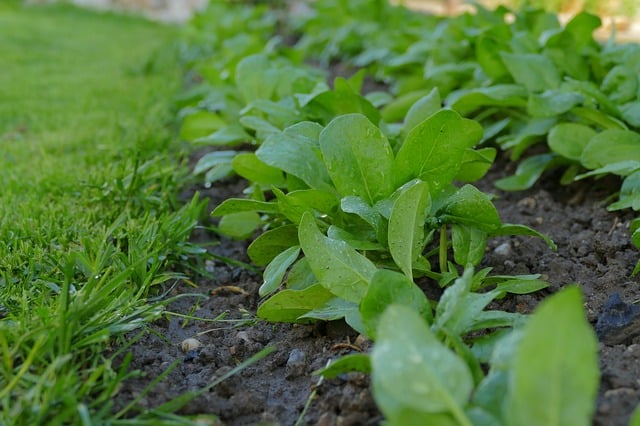
Spinach is not only a versatile green but also boasts an impressive nutrient profile, rich in iron, calcium, and vitamins A and C. It’s a cool-weather crop that thrives in the mild temperatures of early spring.
Planting Details: You can begin sowing spinach seeds in April in USDA zones 3-9. Ideal growing conditions involve temperatures between 50°F and 60°F. Strong growth is facilitated in well-drained, fertile soils rich in organic matter.
Tips for Success: Seed spinach about 1 inch apart and cover them lightly with soil. Due to its quick growth, spinach can be harvested several times; simply snip off the outer leaves and allow the inner ones to continue growing. Regular watering, especially during warmer days, is essential to avoid bolting.
Beets
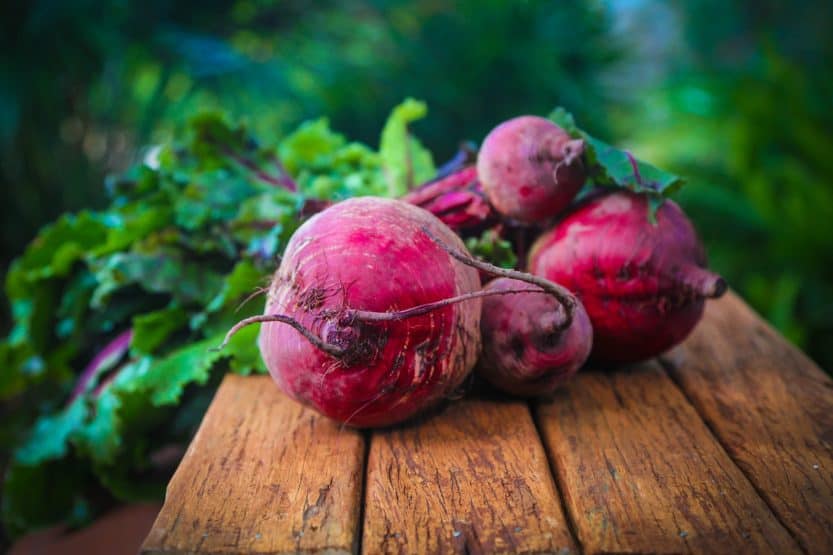
Beets are root vegetables prized for their vibrant colors and robust flavor. They’re nutrient-dense, providing folate, manganese, and potassium along with dietary nitrates, which can improve heart health and circulation.
Planting Details: In USDA zones 3-7, you can plant beets from early to late April. These hardy plants do well in cool temperatures between 50°F and 85°F, and they prefer full sun with well-drained soil.
Tips for Success: Sow beet seeds about 1 inch deep and 2-3 inches apart to allow for growth. It’s important to keep the soil moisture consistent without overwatering, as this helps in developing sweet roots. Harvest beets at a size of 1-2 inches in diameter for optimal flavor and tenderness.
Broccoli

Broccoli is a nutritious powerhouse, well-known for its cancer-fighting properties due to its high levels of antioxidants. This cool-weather crop does exceptionally well when planted at the right time in spring.
Planting Details: In USDA zones 3-7, broccoli can be started indoors as early as March and transplanted into your garden in April. It thrives best in temperatures ranging from 60°F to 70°F, requiring nutrient-rich, well-drained soil.
Tips for Success: When transplanting, ensure to space seedlings around 18 inches apart. Consistent watering is key, and mulch can help maintain soil moisture. Harvest broccoli when the heads are firm and tight for the best flavor. If allowed to flower, the taste will become more bitter.
Cauliflower
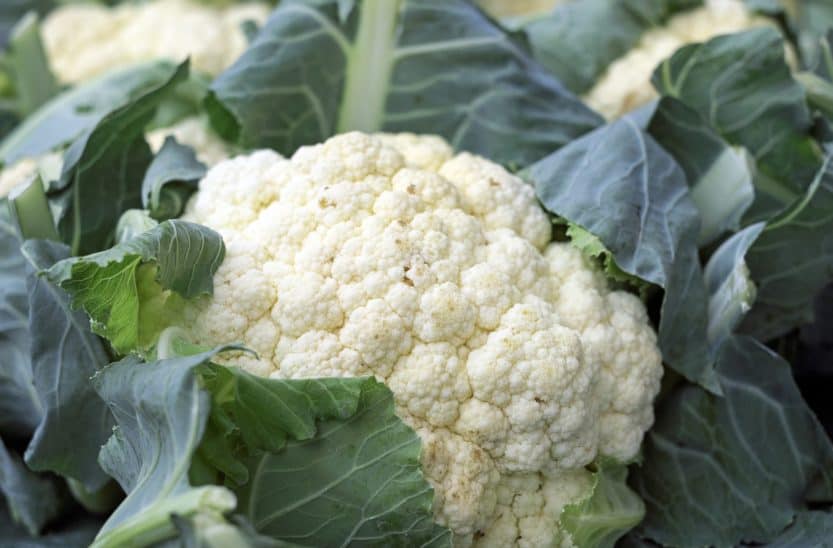
Cauliflower, like broccoli, is rich in antioxidants and vitamins. It adapts well to cooler weather and offers incredible versatility in cooking.
Planting Details: For USDA zones 3-7, cauliflower should be started in March indoors and transferred to the garden in April. This vegetable prefers temperatures between 60°F and 70°F, and it requires fertile, well-drained soil.
Tips for Success: Space cauliflower plants about 18 to 24 inches apart for ample growth. Regular watering is essential, as is monitoring for pests, particularly aphids. To prevent bitterness, harvest heads when they are compact and before the florets begin to separate.
Swiss Chard
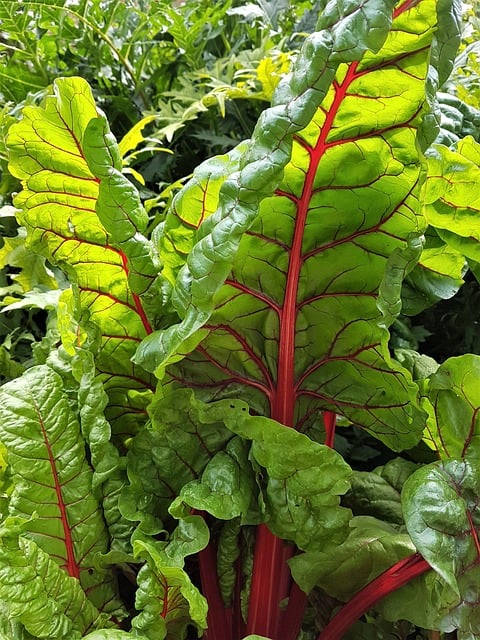
Swiss chard is a stunning leafy green known for its colorful stems and broad, hearty leaves. It provides an abundance of vitamins, particularly K, A, and C, and is a star in many recipes.
Planting Details: In USDA zones 3-9, Swiss chard can be directly seeded into the soil in April. This leafy green thrives in temperatures between 50°F to 75°F and prefers well-drained, rich soil.
Tips for Success: Sow seeds about 1 inch deep and 3-4 inches apart to account for their broad leaf growth. Swiss chard is relatively low-maintenance; regular watering ensures tender leaves, but it’s also drought-resistant once established. Harvest leaves whenever you need them—this plant continues to produce throughout the growing season.
Cucumbers
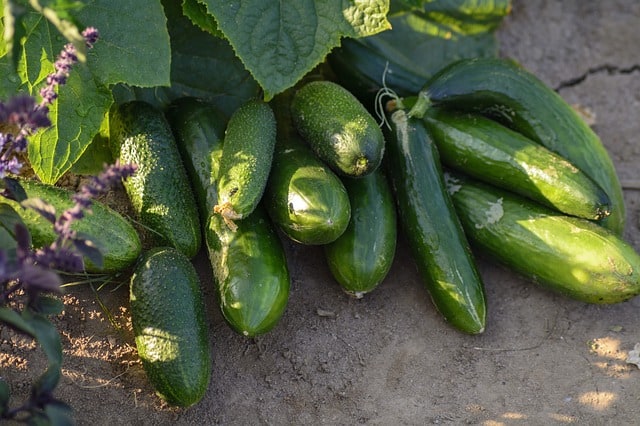
Cucumbers are a warm-weather crop; while they can be seeded indoors in April, it is vital to ensure that they are transplanted outdoors only after the last frost. Cucumbers are refreshing, low in calories, and hydrating.
Planting Details: For USDA zones 3-5, you want to plant seeds indoors in April for later transplanting after the frost. In warmer USDA zones (6-10), directly sowing seeds outdoors in April is ideal. Cucumbers thrive in temperatures ranging from 70°F to 95°F, preferring full sun and rich, well-draining soil.
Tips for Success: When transplanting seedlings, space them about 12-18 inches apart in rows. Support them with trellises as they grow to maximize yield and improve air circulation, which can help in preventing diseases. Regular watering, especially as temperatures soar, ensures crisp, juicy cucumbers that make excellent snacks and salad additions.
Flowers To Plant
As the frost melts away, April is the month when gardens begin to bloom, painting the landscape with color and fragrance. Let’s delve into ten flowers that you can plant in April, each bringing its unique vibrancy to your garden.
Pansies
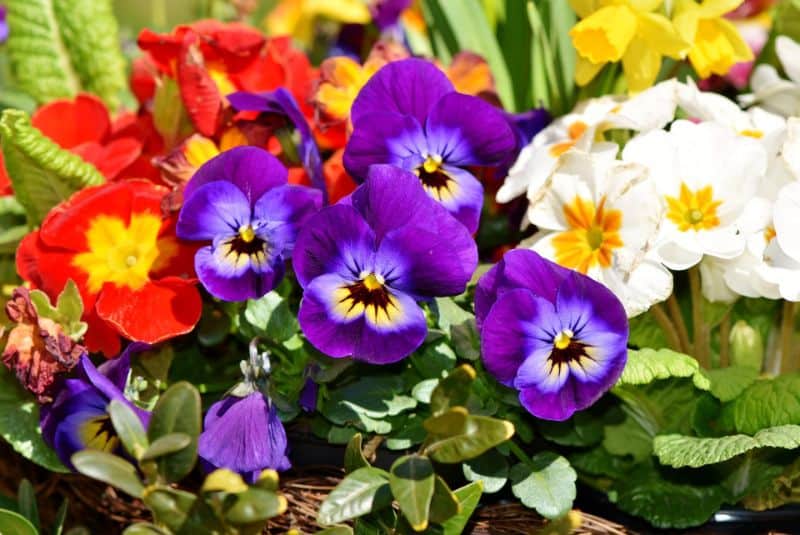
Pansies are hardy, cheerful flowers that thrive in cooler temperatures, symbolizing the arrival of spring. Their vibrant colors brighten gardens and are often associated with traditional gardening.
Planting Details: Suitable for USDA zones 3-8, pansies can be planted as early as late March or early April. They thrive best in temperatures ranging from 40°F to 70°F and can endure light frost, making them a resilient option for early spring.
Tips for Success: For optimal blooming, plant pansies in well-draining soil enriched with compost, making sure to space them about 6-9 inches apart. Regular watering helps keep them hydrated, especially during dry spells. Deadheading can encourage continuous blooming throughout the season.
Snapdragons
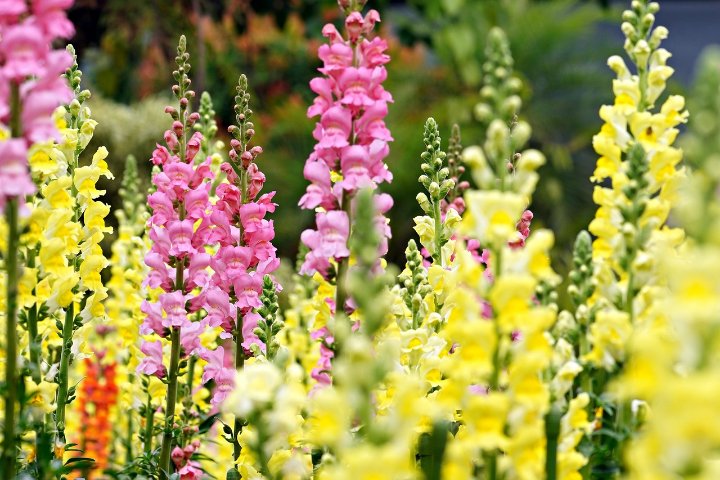
Snapdragons are not only visually stunning but also fun with their unique flowers that resemble dragon snouts. They add height and charm to garden borders and bouquets, delighting gardeners and pollinators alike.
Planting Details: In USDA zones 3-9, snapdragons can be seeded directly in the garden in early April. These flowers prefer mild temperatures between 60°F to 70°F and thrive best in rich, well-drained soil.
Tips for Success: Sow seeds about 1/4 inch deep and space them 6-12 inches apart. Snapdragons appreciate regular moisture but are sensitive to over-watering, so be mindful of the soil’s drainage. As these flowers grow, cut back the spent blooms to encourage more flowers to form.
Marigolds
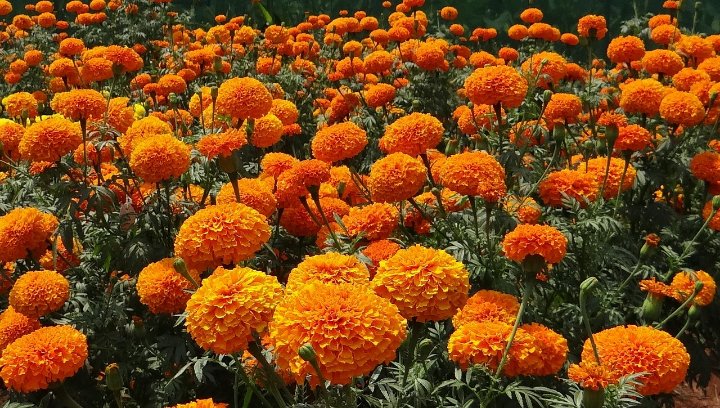
Marigolds are vibrant annual flowers celebrated for their rich colors and resilience. Known as garden guardians, they repel harmful insects and pests, making them invaluable companions to vegetable gardens.
Planting Details: In USDA zones 3-11, you can plant marigolds in April as the risk of frost declines. They thrive in warm temperatures ranging from 70°F to 100°F, necessitating full sun and well-drained soil to flourish.
Tips for Success: Sow marigold seeds about 1/4 inch deep and ensure they are spaced at least 8-12 inches apart. Regular watering, especially during prolonged dry spells, will promote lush blooms. Pinching off faded flowers helps encourage new growth, extending their blooming season.
Calendula

Calendula, or pot marigold, is a stunning flower with warm, bright colors that attract beneficial insects. Known for its edible petals, calendula adds color to dishes as well as to gardens.
Planting Details: Ideal for USDA zones 3-10, calendula can be planted in early April. They thrive in temperatures between 50°F and 70°F and can withstand light frosts, making them appropriate for early spring planting.
Tips for Success: Sow seeds about 1/4 inch deep in well-drained soil, spacing them around 12 inches apart. Regular watering will keep them happy, especially during dry spells. Harvest the flowers just before they fully bloom for the freshest petals, and pinch back spent flowers to encourage further blooming.
Petunias

Petunias are beloved for their ability to fill gardens and containers with vibrant colors and delightful fragrances. They have a long blooming period and can create a stunning display.
Planting Details: In USDA zones 4-11, April is an ideal time to start planting petunias after the last frost. Petunias thrive in temperatures between 60°F and 80°F and are best grown in full sun with well-drained soil.
Tips for Success: Plant petunia seeds about 1/4 inch deep and allow them to space at least 12 inches apart. Regular watering and prompt deadheading can help to encourage continuous blooming throughout the season. Adding organic matter or fertilizer can boost their growth and blooming potential.
Zinnias
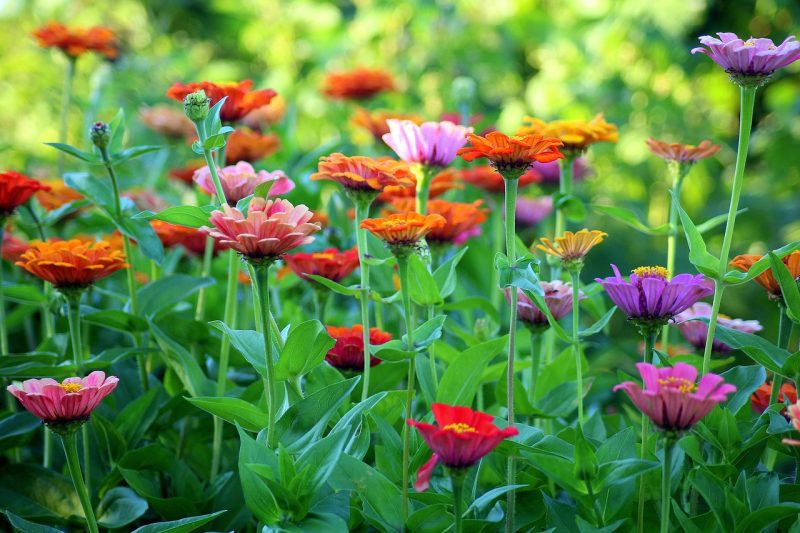
Zinnias radiate color and are a gardener’s favorite for attracting butterflies. These annuals come in a variety of shapes and sizes, providing a long-lasting vibrant display.
Planting Details: Zinnias can be planted in April in USDA zones 3-11 as the weather warms. They thrive in temperatures ranging from 70°F to 90°F and appreciate full sunlight with well-drained soil.
Tips for Success: Sow seeds about 1/4 to 1/2 inch deep, spacing them 6-12 inches apart, depending on the variety. Regular watering is essential; zinnias prefer consistent moisture, especially during dry spells. Pinch back the stems to promote bushier growth and more blooms.
Cosmos
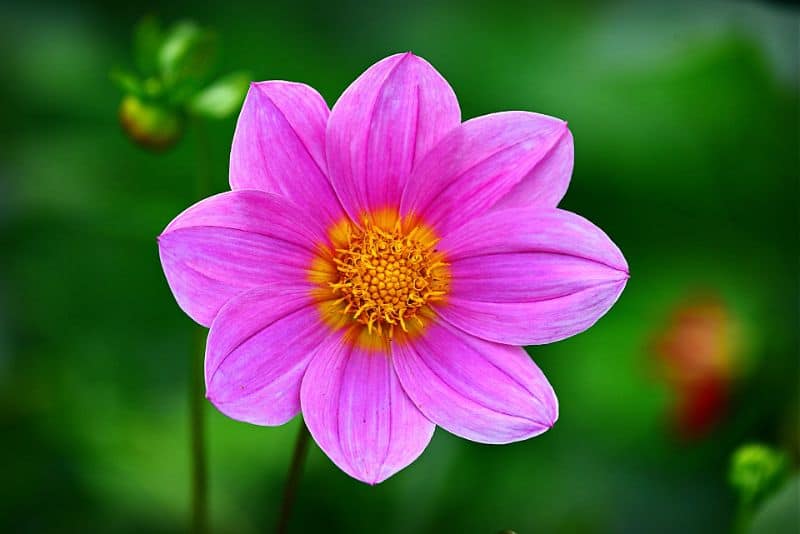
Cosmos are easy-going annuals known for their delicate foliage and cheerful blossoms. They are incredibly adaptable and thrive in various conditions, making them perfect for gardeners of all skill levels.
Planting Details: In USDA zones 3-10, cosmos can be directly seeded outdoors in late April after the danger of frost. They prefer warmer temperatures ranging from 70°F to 90°F and thrive in full sun.
Tips for Success: Sow seeds about 1/4 inch deep, spacing them about 12 inches apart. Regular watering will help them establish during dry periods. Deadhead spent flowers to promote continual blooming, and watch as butterflies and bees flock to their nectar-rich flowers.
Coreopsis
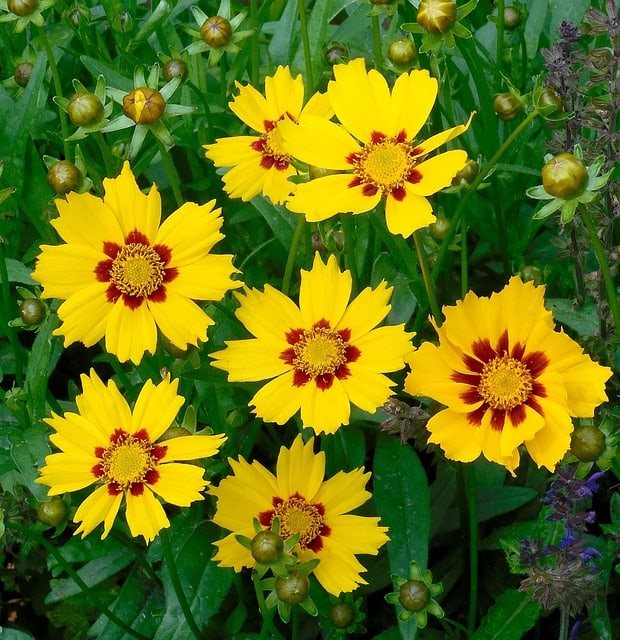
Coreopsis, or tickseed, is a bright perennial flower that produces vibrant yellow and orange blooms, adding cheer to any garden. Drought-tolerant once established, coreopsis is ideal for low-maintenance gardens.
Planting Details: In USDA zones 3-9, April is the right time to sow coreopsis seeds. They thrive best in temperatures between 60°F and 75°F and prefer full sun with well-drained soil to flourish.
Tips for Success: Sow seeds about 1/4 inch deep and space them 12 inches apart. Coreopsis is relatively easy to grow, requiring moderate watering in the early stages. Pruning back the spent blooms encourages more flowering throughout the summer.
Sweet Peas
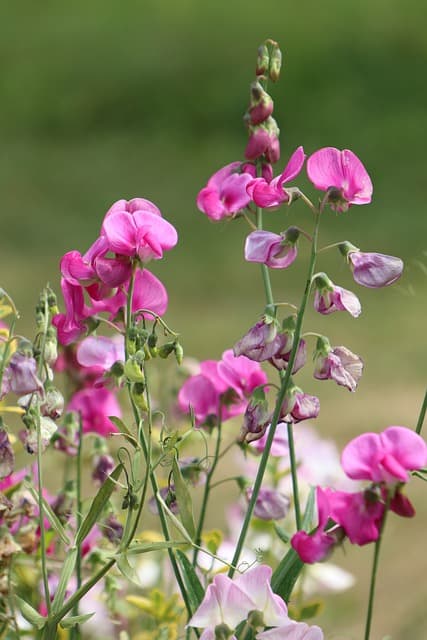
Sweet peas are a lovely addition to any garden, delighting with their enchanting fragrance and delightful colors. Often found in cottage gardens, they invite bees and butterflies, adding vibrancy and life.
Planting Details: In USDA zones 3-7, sweet peas can be sown directly in the garden in early to mid-April. They thrive in cooler temperatures between 50°F and 65°F.
Tips for Success: Plant sweet pea seeds about 1-2 inches deep and ensure enough spacing for them to climb—12-24 inches apart will suffice. Providing a trellis will only enhance their growth. Regular watering keeps them healthy, and cutting flower stems will promote continuous blooming.
Dahlias
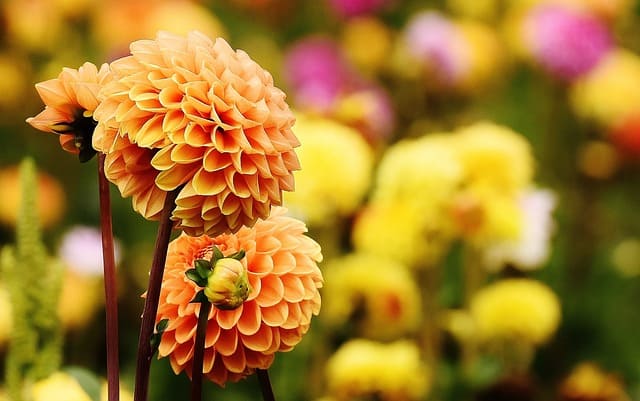
Dahlias are striking perennials known for their diverse shapes and bold colors. They require some care, but their jaw-dropping blooms are well worth the effort.
Planting Details: In USDA zones 3-10, wait until April after the last frost to plant dahlia tubers. They flourish in warm temperatures between 65°F and 75°F in full sun.
Tips for Success: Space tubers about 18-24 inches apart and plant approximately 6-8 inches deep for proper root development. Regular watering, particularly during dry spells, is crucial. Supporting dahlias when they grow taller will help them withstand wind and keep blooms upright, creating a stunning visual display in your garden.
Herbs To Plant
April not only provides an opportunity to grow vegetables and flowers but also marks an exciting time to plant herbs in your garden. These aromatic plants not only enhance culinary creations but also attract beneficial pollinators, creating a lively atmosphere in any garden. Let’s explore ten herbs you can fill your garden with this April.
Basil
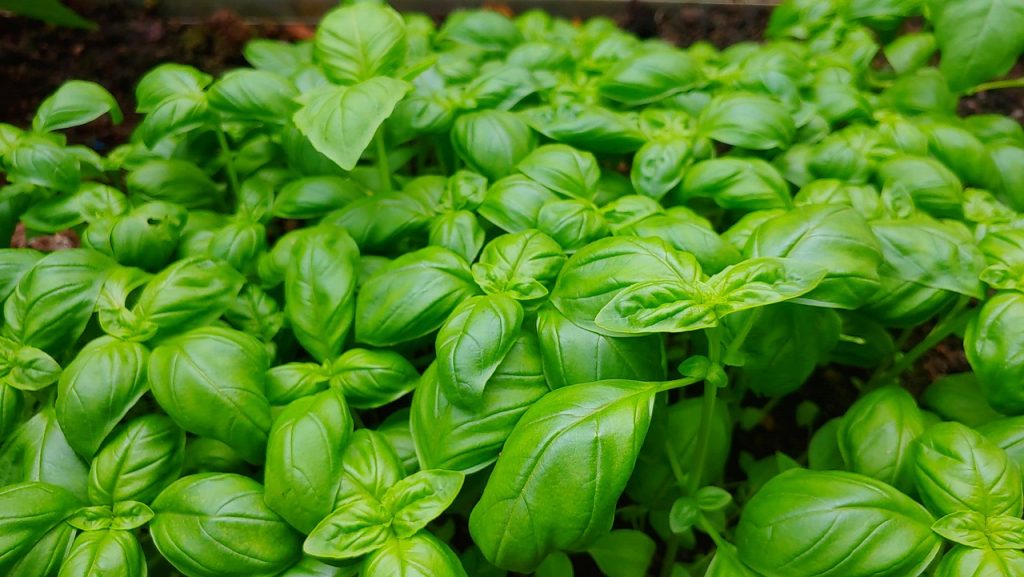
Basil is one of the most popular culinary herbs, beloved for its aromatic leaves that can elevate a wide range of dishes. Its vibrant green hue and fragrant profile make basil a staple in kitchens around the world, particularly in Mediterranean cuisine.
Planting Details: This warm-weather herb should be planted after the danger of frost in USDA zones 5-10. Starting seeds indoors in early April can give you a head start, aiming for temperatures between 70°F to 90°F for optimal growth.
Tips for Success: Plant basil seeds about 1/4 inch deep, with a spacing of about 12 inches apart. Basil loves full sun and requires consistent moisture, making it important to water regularly. Pinching off the flower buds encourages leafy growth, ensuring a lush harvest for your culinary delights.
Parsley
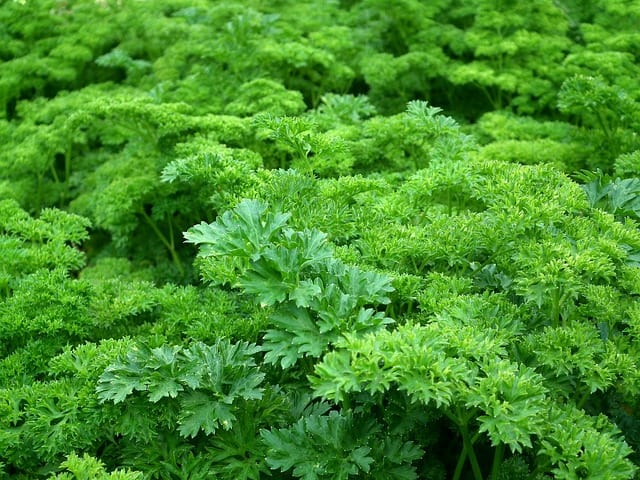
Parsley is a versatile herb packed with nutrients and often appreciated for its bright green leafiness that complements many dishes. Rich in vitamins A, C, and K, parsley not only adds flavor but also enhances the nutritional profile of meals.
Planting Details: In USDA zones 3-9, parsley can be directly sown into the soil or started indoors for transplanting later. April marks a great time to begin, especially since parsley can tolerate cooler weather and even light frost.
Tips for Success: Sow seeds about 1/4 inch deep and space them 8-12 inches apart. Parsley seeds can take a bit longer to germinate, so be patient. Regular watering and well-drained soil are essential for successful growth. Harvest leaves as needed—the more you pick, the bushier your parsley will become.
Cilantro

Cilantro is a quick-growing herb that is cherished for its fragrant leaves that add a burst of freshness to recipes. It’s rich in antioxidants and offers unique flavor profiles, often found in various international cuisines.
Planting Details: April is a great time to sow cilantro seeds in USDA zones 3-9. This herb prefers mild temperatures and can tolerate light frost, thriving best between 50°F and 75°F.
Tips for Success: Sow seeds about 1/4 inch deep, providing around 6 inches of space between each plant. Cilantro can bolt quickly in hot weather, so early spring planting helps ensure a flavorful harvest before summer heat arrives. Regular watering ensures that the soil remains slightly moist. Enjoy harvesting leaves and using them in your dishes as they emerge.
Dill
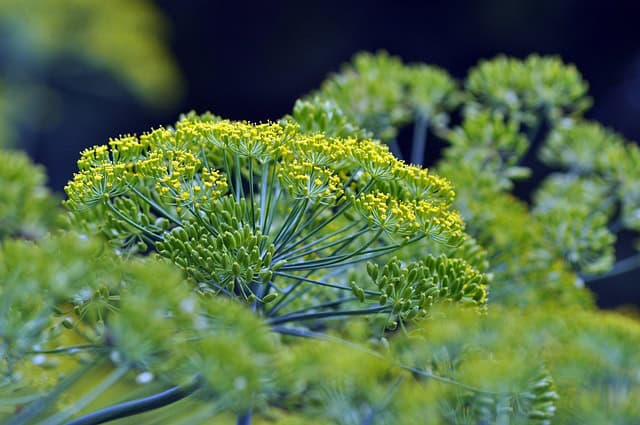
Dill is an aromatic herb that’s as much about taste as it is about aesthetics. With its delicate, feathery leaves and unique flavor, dill enhances a range of dishes, especially pickles and seafood.
Planting Details: April is well-suited for sowing dill seeds directly into the garden in USDA zones 3-9. Dill does not transplant well, so starting directly in the ground means a better chance of thriving. It prefers cooler temperatures and can flourish between 60°F to 75°F.
Tips for Success: Plant dill seeds about 1/4 inch deep, spaced around 12 inches apart in well-drained soil. Regular watering helps to keep the plants healthy, but be careful not to let them sit in waterlogged soil. Harvest leaves and seeds as they develop, using them in everything from salad dressings to hearty dishes.
Thyme

Thyme is a flavorful perennial herb that is hardy and drought-resistant once established. Its aromatic leaves add depth to various cuisines, making it a must-have in any herb garden.
Planting Details: April is an ideal time to plant thyme seeds or plant divisions in USDA zones 3-9. It thrives in well-drained, sandy soil and prefers temperatures ranging from 60°F to 70°F.
Tips for Success: Sow seeds about 1/4 inch deep, with spacing of 12-18 inches apart. Thyme requires full sunlight and prefers a bit of neglect—from infrequent watering to sparing fertilization. Once established, thyme is incredibly resilient and can produce flavorful leaves throughout the season.
Oregano

Oregano is a robust herb known for its rich flavor, especially in Italian dishes. This hardy perennial can withstand various conditions, making it suitable for many gardens.
Planting Details: Oregano can be planted in April in USDA zones 5-10—either from seed indoors for transplanting or by direct sowing outdoors. It prefers warm temperatures around 65°F to 80°F and thrives in full sun.
Tips for Success: Sow seeds about 1/4 inch deep and allow for 12-18 inches between plants for proper airflow. Oregano is drought-tolerant, which makes caring for it quite simple. Regular harvesting encourages bushier growth, providing you with plenty of leaves to enhance your culinary creations.
Chives

Chives are a perennial herb known for their mild onion flavor and delightful purple blooms. This herb is a favorite among gardeners for its ease of growth and ability to enhance dishes across a variety of cuisines.
Planting Details: In USDA zones 3-9, April is the perfect time to sow chive seeds or transplant established plants. Chives can thrive in cool temperatures, doing well even in light frost.
Tips for Success: Sow seeds about 1/4 inch deep and space them 10 inches apart. Chives appreciate well-drained soil and prefer sunny locations. Regular watering ensures that they remain plump and flavorful. Harvest chive leaves regularly by snipping them, which encourages further growth.
Mint
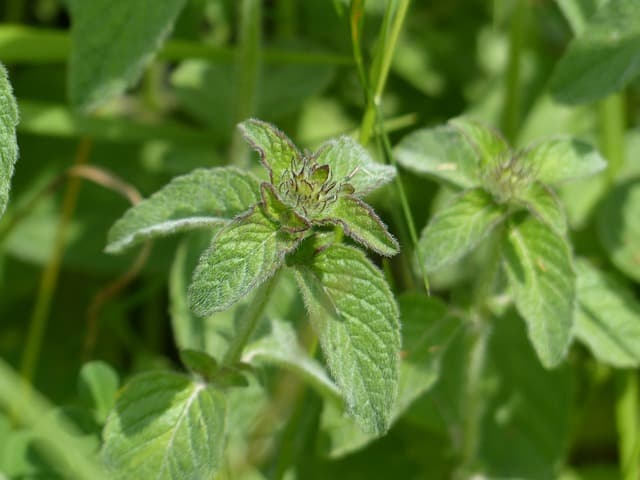
Mint is a vigorous perennial herb characterized by its refreshing aroma and diverse culinary uses. It thrives in various dishes, drinks, and desserts, making it a beloved choice for homeowners.
Planting Details: April is a great time to plant mint, preferably from cuttings, as it tends to take over in the garden if sown from seed. Suitable for USDA zones 4-10, it prefers moist, well-drained soil and thrives in temperatures between 60°F and 75°F.
Tips for Success: Plant mint in containers to keep it from invading other garden beds. Ensure it has ample sunlight, and monitor moisture carefully. Mint can spread rapidly, but consistent harvesting of the leaves will keep it under control while providing you with fresh herbs to enjoy.
Sage
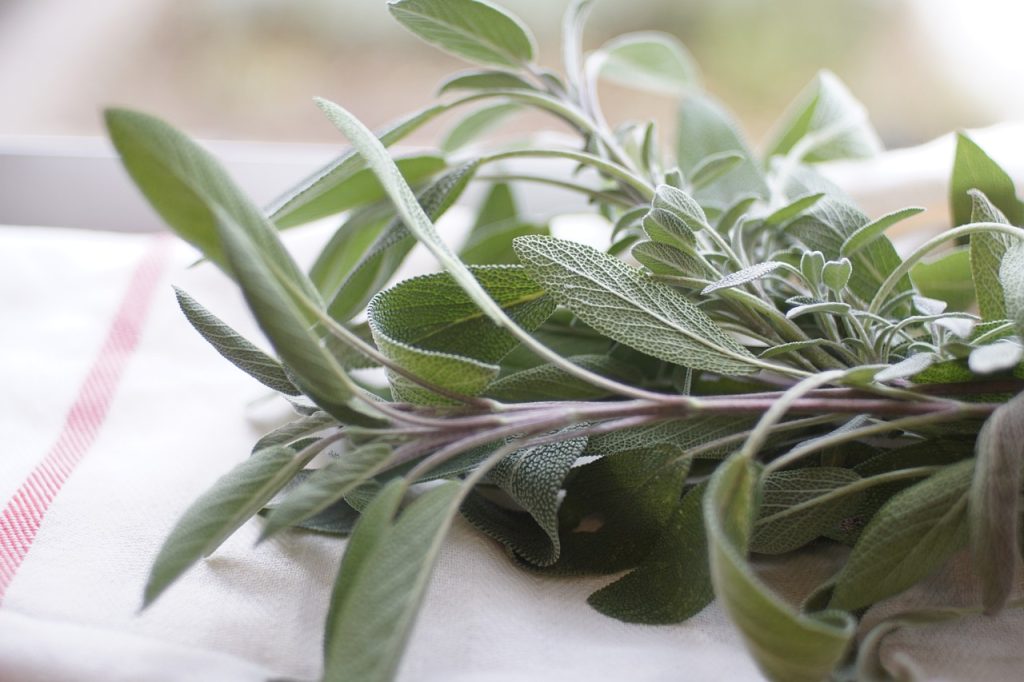
Sage is a fragrant perennial herb valued for its culinary uses and medicinal benefits. Its robust flavor enhances everything from meats to soups, making it an essential herb for any cook.
Planting Details: April is the opportune time to sow sage seeds or transplant established seedlings in USDA zones 5-9. It thrives in temperatures between 60°F and 75°F and prefers full sun.
Tips for Success: Space sage plants about 18-24 inches apart, allowing for air circulation and preventing fungal diseases. Once established, sage is drought-tolerant, requiring minimal upkeep. Regular harvesting will promote bushy growth, allowing for a plentiful supply throughout the season.
Lemongrass
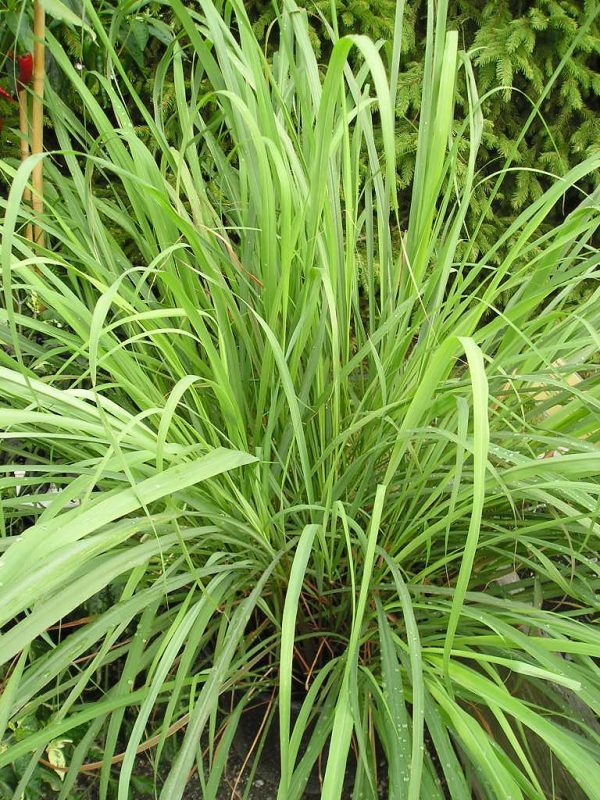
Lemongrass is a tropical herb cherished for its citrusy flavor, often used in Asian cooking and teas. Its aromatic properties bring vibrant flavors to various dishes.
Planting Details: In USDA zones 9-11, you can start lemongrass indoors and transplant it after the last frost in April. This herb thrives in strong sunlight and prefers warm temperatures, ideally between 70°F and 90°F.
Tips for Success: Plant lemongrass about 12 inches apart in rich, well-drained soil. Regular watering is essential, particularly in warmer weather, to maintain moisture. Harvest the stalks when they are mature and fragrant, adding fresh, zesty flavor to your meals.
Conclusion
April offers a unique charm in the gardening calendar, presenting the perfect opportunity to cultivate a rich tapestry of vegetables, flowers, and herbs. Each plant brings its distinct colors, flavors, and fragrances, transforming your garden into a vibrant sanctuary. By understanding the specific needs of each variety according to USDA zones, you can ensure a productive planting season.


